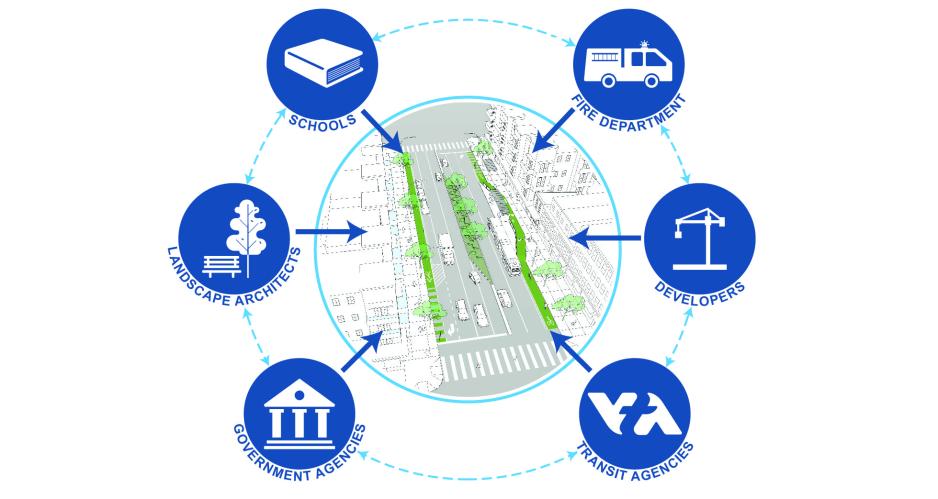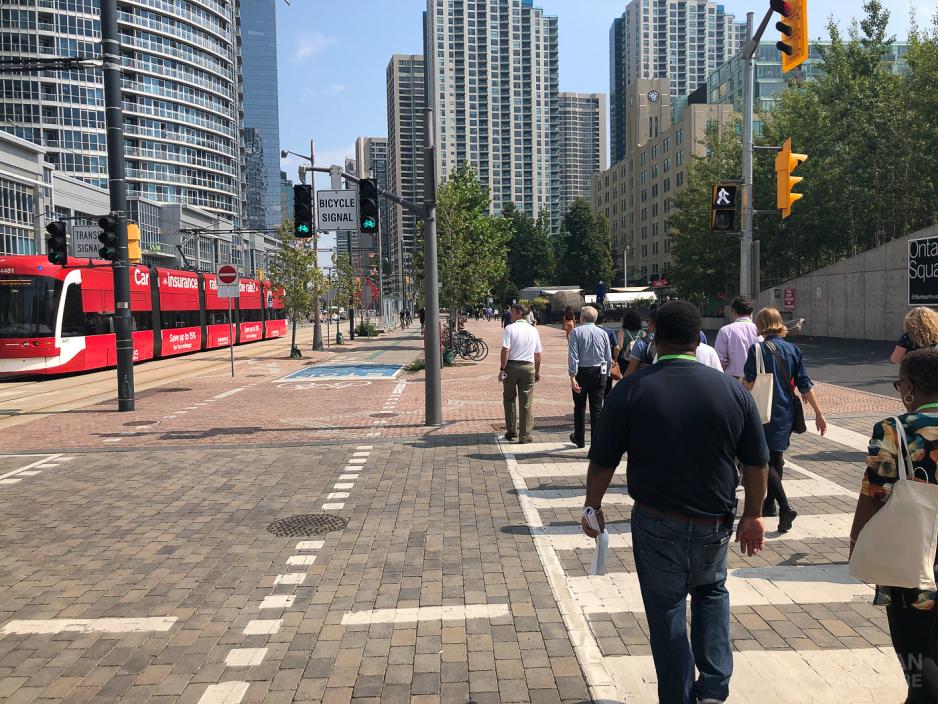Successful street designs require more than the work of engineers. Planners, landscape architects, sociologists, artists, and so many more experts can develop attractive streetscapes that people want to spend time using.
Develop a multi-disciplinary project development team to guide large street projects. Look for staff from transportation planning, bicycle and pedestrian programs, land use and real estate departments, transit, parks and recreation, public safety, and schools. These disciplines can provide background, context, and subject matter expertise that ensure a street design supports local plans and policies and meets community needs.
- Ask local fire and safety departments to comment on proposed designs. If changes to street design are necessary, seek design compromises that maintain desired design elements while providing necessary emergency vehicle access.
- Ask the transit agency to comment on street designs along transit routes. VTA can provide site-specific information needed to design bus stops, including required length, geometric requirements for bus operations, existing and planned service, layover and timepoint locations, and planned changes to existing bus stop locations
- Include school district facilities and school administration for projects adjacent to schools. Schools have unique and challenging transportation needs. Students are vulnerable road users and many cities in Santa Clara County support Safe Routes to School programs that encourage students to walk and bike. School stakeholders can provide context and offer solutions.
- Leverage case studies for examples of how emergency services, schools, transit, and traffic have been incorporated creatively into holistic approaches to street design.
Body
Cross-training engineers and planners creates a collaborative environment for designing and developing streets.
- Planners’ role. Generally, planners work with the community to define the goals, purpose, and need for a particular street project. Planners who understand how costly a project may be, how easy or hard it may be to build, and potential challenges such as permitting and approvals, are better able to identify feasible projects that meet the community’s needs.
- Engineers’ role. Engineers take the defined project and work with various stakeholders to determine how the project can be built to meet the goals defined by the planners. Engineers with an understanding of the planning goals and the community priorities are better able to make design decisions and tradeoffs that meet the community’s needs.
- Regardless of cross-training, planners and engineers should collaborate from beginning to end of a street design project. Planners generally take the lead at the beginning with civil and traffic engineers weighing in at decision points and providing general advice. When the project moves to environmental and design phases, engineers lead the project with planners staying on to provide context and input into design decisions.

